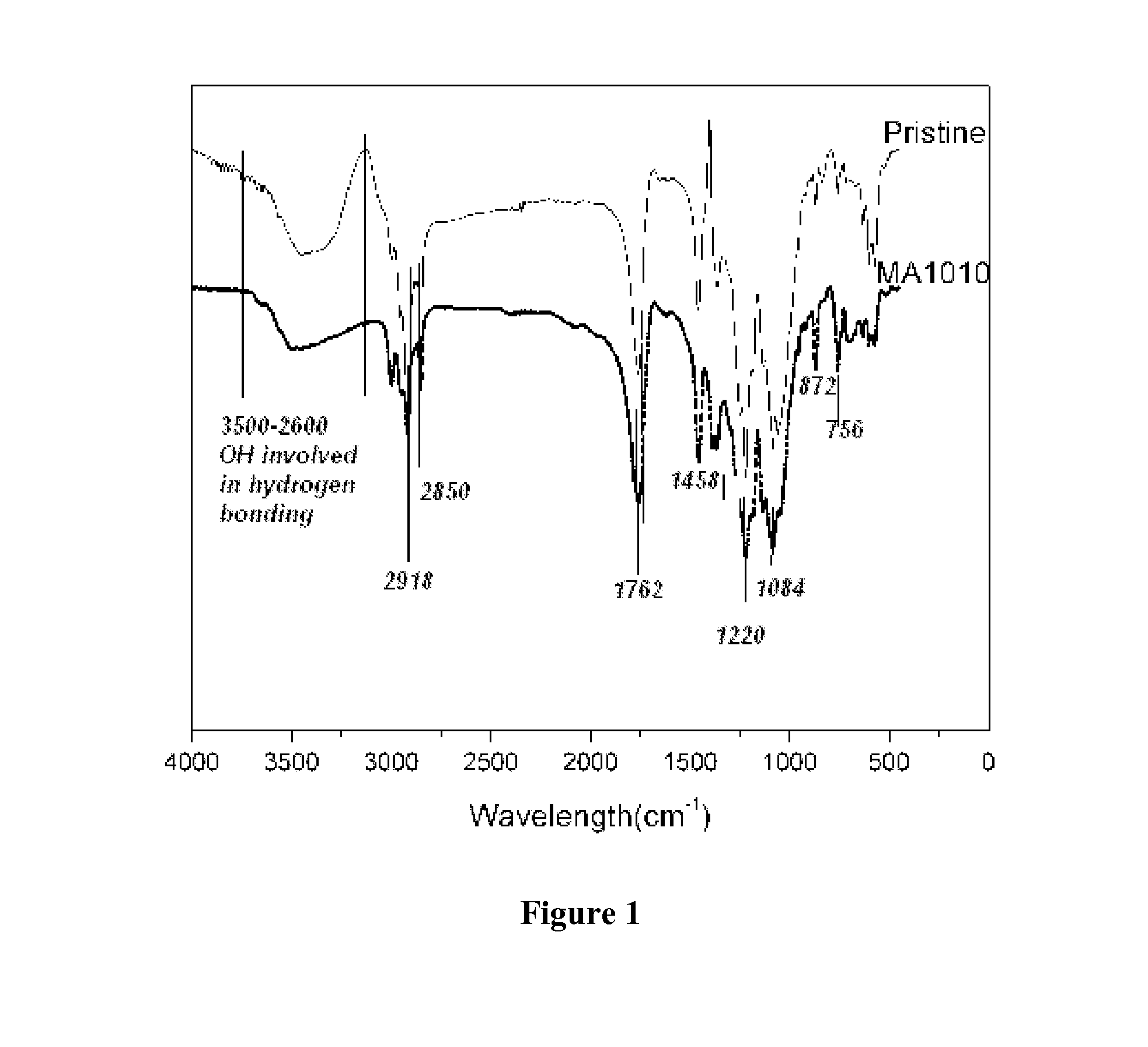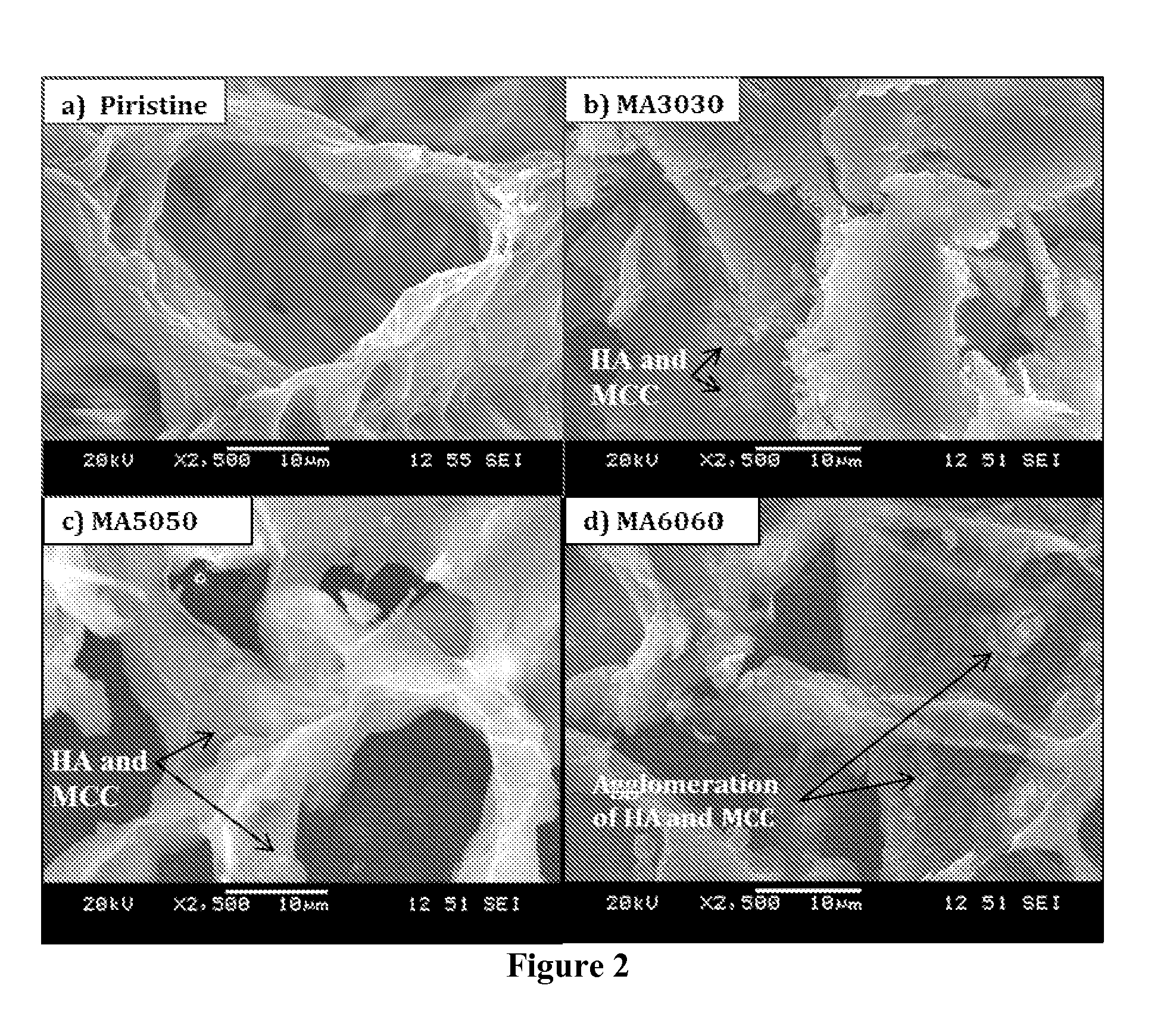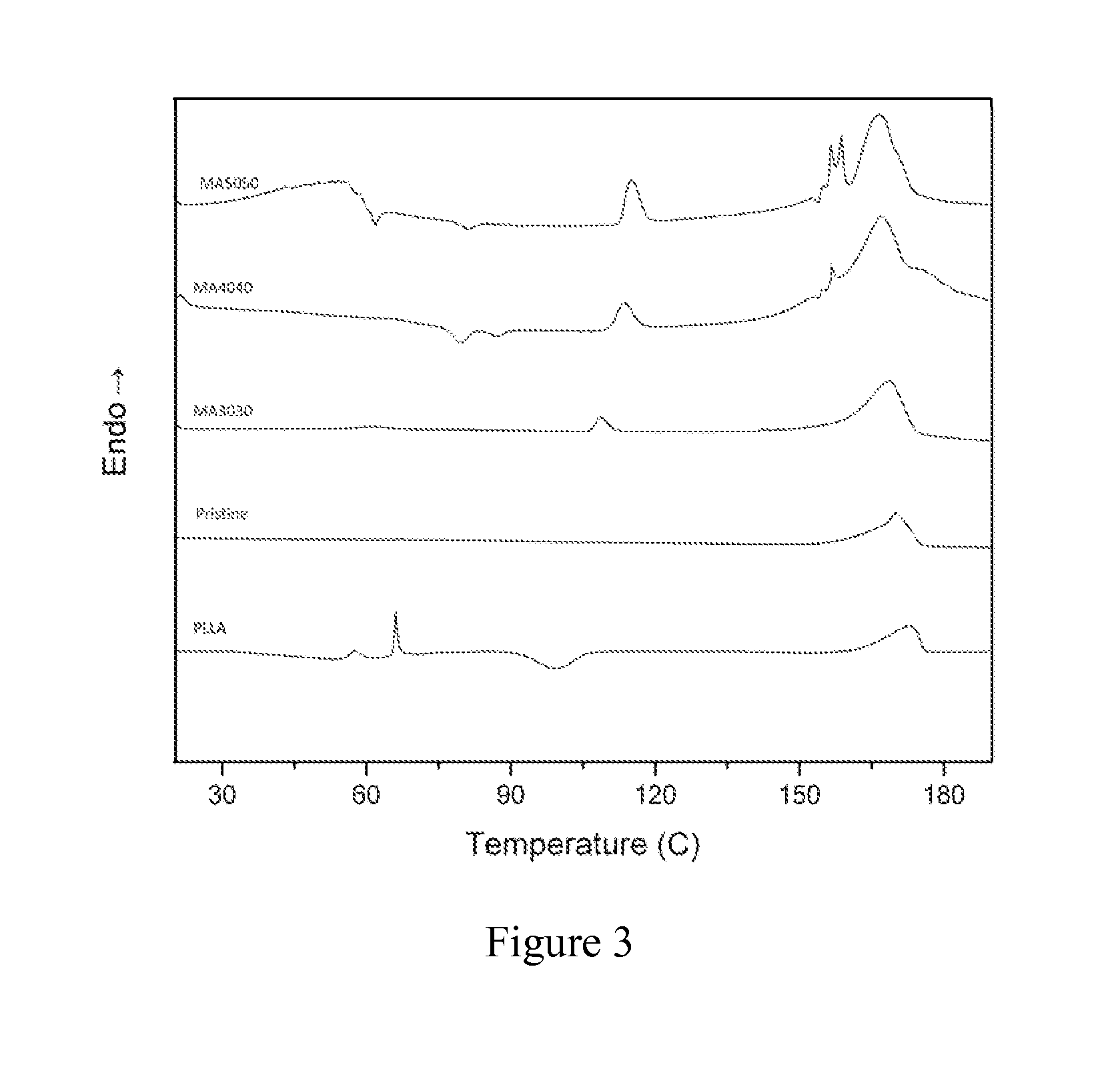Artificial bone nanocomposite and method of manufacture
a technology of nanocomposites and bone, applied in the field of artificial bone, can solve the problems of reducing affecting the mechanical strength of artificial nanocomposites, and a considerable chance of bone being rejected by the patient's body, so as to reduce the compressive yield, weaken the mechanical strength, and increase the porosity
- Summary
- Abstract
- Description
- Claims
- Application Information
AI Technical Summary
Benefits of technology
Problems solved by technology
Method used
Image
Examples
example 1
Preparation of the First Class (MA Series) of Nanocomposite Composition
[0053]Poly (L-Lactide acid), PLLA, was purchased from Sigma-Aldrich (Mw≧85 KDalton, Lactel, USA) and directly used as matrix for production of composites. The PLLA, when purchased, had average molecular weight (Mw) of 85000 g / mol, 37% of crystallinity, a glass transition temperature (Tg) ranging 60 to 65° C. and degradation time greater than 24 months. Cotton source microcrystalline cellulose (MCC), with a mean particle size of 20 μm and an aspect ratio of 2-4, from Sigma-Aldrich (USA) was used as a reinforcing agent. Hydroxyapatite nanoparticles (HA) were obtained from Sigma-Aldrich (USA), having a mean particle size 2 / g) and a chemical formulation of Ca5 (OH)(PO4). Sodium Dodyl Sulphate (SDS), used as a coupling agent, was purchased from (Fluka, Canada). 1,4-Dioxane (Sigma-Aldrich, ACS Reagent, with purity ≧99%) ethanol (VWR, Canada, purity ≧99%) were used as solvents. Other solvents used in the process, notabl...
example 2
Modified Method of Preparation of Nanocomposite Composition
[0057]The method of Example 1 was repeated, with the following variations. First, a sequential solvent extraction of water (which can be present in the purchased HA material) was performed prior to the polymer concentrations being dispersed in 1,4-dioxane. This additional step was found to decrease the sedimentation and agglomeration of HA nanoparticles. A further variation was adding a surfactant, such as SDS, to the mixture of MCC and HA nanoparticles in 1,4-dioxane after the centrifuging step in the sequential solvent extraction and not before. This additional step prevented any negative effects of ultrasonication on the intermolecular-bonding between constituents of the colloid. A further variation to the method was the incorporation of salt particles as a porogen material, such as sodium chloride salt or sugar, during the preparation of the nanocomposite. It was observed that when the porogen particles leached out, they...
example 3
Fourier Transform Infrared Spectroscopic Analysis of Compositions
[0060]The chemical analysis of the prepared samples was performed using an Fourier Transform Infrared (FTIR) spectrometer (Nicolet Nexus 670, Corp, Madison, USA) equipped with a NIC (Ni—In—Cd) detector. The FTIR spectrum was measured in spectral range of 400-4000 cm−1. The background data collected for a KBr blank were subtracted from each spectrum. Samples were mixed with KBr powder at room temperature. The standard spectral resolution of the instrument was between 0.16 cm−1 and 0.5 cm−1 suitable for most applications.
[0061]FTIR was implemented to evaluate the chemical interactions between the PLLA, the MCC and coupling agent (SDS). The intensity of —OH− absorption peak of MCC at 3433 cm−1 decreased after the incorporation of the coupling agent and MCC in nanocomposite. This change suggested formation of hydrogen bonding between —OH groups of MCC and Na+ groups of SDS. The area under the peak was relevant to the conce...
PUM
| Property | Measurement | Unit |
|---|---|---|
| mean particle size | aaaaa | aaaaa |
| aspect ratio | aaaaa | aaaaa |
| mean particle size | aaaaa | aaaaa |
Abstract
Description
Claims
Application Information
 Login to View More
Login to View More - R&D
- Intellectual Property
- Life Sciences
- Materials
- Tech Scout
- Unparalleled Data Quality
- Higher Quality Content
- 60% Fewer Hallucinations
Browse by: Latest US Patents, China's latest patents, Technical Efficacy Thesaurus, Application Domain, Technology Topic, Popular Technical Reports.
© 2025 PatSnap. All rights reserved.Legal|Privacy policy|Modern Slavery Act Transparency Statement|Sitemap|About US| Contact US: help@patsnap.com



